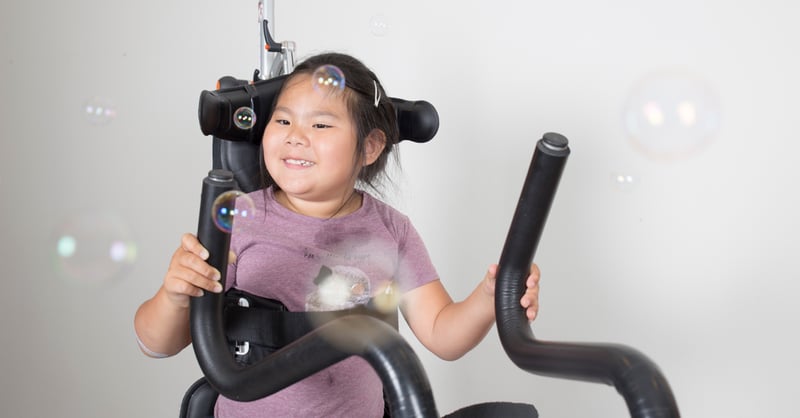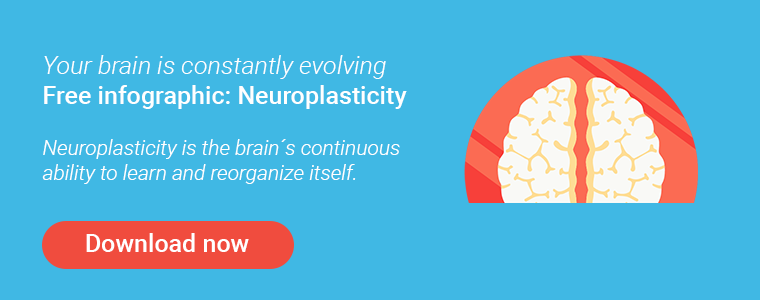What Do We Know About Physical Activity and Cerebral Palsy?


In fact, physical inactivity has been identified as the fourth biggest mortality risk factor.

Looking through literature about cerebral palsy (CP) and physical inactivity, we see that children, adolescents and adults with CP are less physically active than more typically developed people. It also shows a major connection between gross motor function and participation in and frequency of physical activity: The higher GMFCS (Gross Motor Function Classification System) level, the lower participation in physical activity.1
We also find that those with a GMFCS level of I–III participate in more varied forms of physical activity, while children with a GMFCS level of IV–V mainly participate in swimming and horseback riding.2 Studies also indicate that people with CP show sedate behavior in 76–99% of waking hours, and that this increases the risk of developing metabolic and cardiovascular diseases.3
READ MORE: What do we know about strength exercises for people with cerebral palsy?
On what should physiotherapists focus?
This knowledge indicates that physiotherapists who work with children and adolescents with CP, should focus on mapping out to what degree they are physically active. The amount of sedate behavior in kindergarten/school and during leisure time should also be included for a full overview. This is meant to help you initiate measures to stimulate a more active lifestyle, which again will have positive effects on the child’s health.
During this mapping phase, it may be prudent to use ICF as a model to evaluate beneficial and inhibitory factors around physical activity and sedate behavior. You should be evaluating factors like body function level, activity and participation level, and the influence of environment and personal factors.4
A swedish study where children with CP were interviewed about their experience with physical activity, uncovered that children find self selection or agency to be a positive factor. They also expressed the importance of engagement and support from their family when choosing an activity. Access to local activities was also seen as essential, and the children maintained a wish for feelings of speed, as well as being social with family and friends.5
The results of this study confirm the importance of engaging the child in the mapping out of beneficial and inhibitory factors in their lives related to increasing physical activity and reducing sedate behavior. The child should also be given the opportunity to try different activities, and figure out what activities the child and their family find relevant, meaningful and feasible. This could be activities performed at home, in kindergarten or in school, related to moving around, or more organized sports activities.
READ MORE: Seven Questions to Ask Your Physiotherapist
What is the recommended amount of physical activity?
An overview article from the Netherlands recommend children with CP to engage in physical activity with moderate to high intensity. A good goal to aim towards is to spend an hour on the activity, five days a week. In addition, it’s recommended to limit sedate behavior to a maximum of two hours a day per week. The overview article is based on a GMFCS level of I–III, but also adds some recommendations for GMFCS IV–V.3 They note that the greatest amount of health benefits will be seen by children/adolescents with CP who meet the recommended amount of physical activity and reduction of sedate behavior. Meanwhile, the article emphasizes the knowledge that large amounts of sedate behavior is directly harmful, especially when occurring in long, continuous intervals.3 Sedate behavior can be replaced advantageously with light physical activity, especially for children/adolescents with a function level corresponding to GMFCS IV and V.
Do you want to know more about CP?
Read our resource page with answers to most of your questions.
Sources:
1Bult, M. K., Verschuren, O., Jongmans, M. J., Lindeman, E., & Ketelaar, M. (2011). What influences participation in leisure activities of children and youth with physical disabilities? A systematic review. Research in Developmental Disabilities, 32(5), 1521-1529. doi:http://dx.doi.org/10.1016/j.ridd.2011.01.045
2Lauruschkus, K., Westbom, L., Hallström, I., Wagner, P., & Nordmark, E. (2013). Physical activity in a total population of children and adolescents with cerebral palsy. Research in Developmental Disabilities, 34(1), 157-167. doi:http://dx.doi.org/10.1016/j.ridd.2012.07.005
3Verschuren, O., Peterson, M. D., Balemans, A. C. J., & Hurvitz, E. A. (2016). Exercise and physical activity recommendations for people with cerebral palsy. Developmental Medicine & Child Neurology, 58(8), 798-808. doi:10.1111/dmcn.13053
4Vargus-Adams, J. N., & Majhttp://apps.who.int/iris/bitstream/10665/44399/1/9789241599979_eng.pdfnemer, A. (2014). International Classification of Functioning, Disability and Health (ICF) as a Framework for Change: Revolutionizing Rehabilitation. Journal of Child Neurology, 29(8), 1030-1035. doi:10.1177/0883073814533595
5Lauruschkus, K., Nordmark, E., & Hallström, I. (2015). 'It's fun, but ...' Children with cerebral palsy and their experiences of participation in physical activities. Disability & Rehabilitation, 37(4), 283-289. doi:10.3109/09638288.2014.915348
Helsedirektoratet. (2016). Anbefalinger fysisk aktivitet,. Hentet fra https://helsedirektoratet.no/folkehelse/fysisk-aktivitet/anbefalinger-fysisk-aktivitet
World Health Organization, W. h. (2010). Global recommendations on physical activity for health. Hentet fra http://apps.who.int/iris/bitstream/10665/44399/1/9789241599979_eng.pdf

Rikke Damkjær Moen brings many years of experience as clinical physiotherapist to the Made for Movement team. Her mission is to ensure that everybody, regardless of mobility problems, should be able to experience the joy and health benefits of physical activity. As our Medical Manager, Rikke is passionate about sharing knowledge so that individuals with special needs, families, and clinicians can discover the possibilities and solutions provided by Made for Movement.
The F-words: Fitness, Function, Friends, Family, Fun and Future help practitioners, educators, and families to create a supportive and...
The Innowalk Pro is an excellent end-effector device, providing full-body robotic therapy in standing with weight-bearing. It can be...
Epilepsy is a serious neurological brain disorder that causes recurring seizures and is common in children with cerebral palsy. There...
Hear from us from time to time and learn new things
